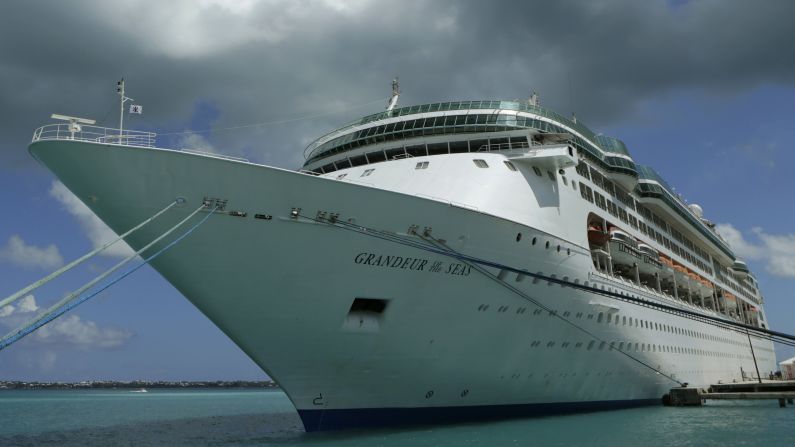‘Carnival Cruise Nightmare: Passengers Trapped for Days in Horrifying Conditions on ‘Poop Cruise’
In a harrowing tale that has shocked the cruise industry and horrified thousands of would-be vacationers, the Carnival Cruise Line’s “Poop Cruise” has gone down in history as one of the most unforgettable and uncomfortable voyages ever. Passengers aboard the Carnival Triumph found themselves trapped in miserable conditions for days after an engine fire disabled the ship, leaving them with limited power, sewage problems, and no escape.
The ordeal, which took place in February 2013, has since been referred to as the “Poop Cruise” due to the unsanitary conditions aboard the ship. Here’s a closer look at the nightmare that unfolded on this ill-fated voyage.
The Voyage Turns Into a Nightmare
It was supposed to be a fun-filled week-long getaway, set to explore the sunny Caribbean. Passengers boarded the Carnival Triumph in Galveston, Texas, for what many expected to be a relaxing and carefree cruise. However, the dream quickly turned into a nightmare when an engine room fire broke out early in the journey, knocking out the ship’s primary power systems.
The fire was quickly contained, but it left the ship without enough power to maintain basic operations. This meant that the air conditioning, lighting, and, most notably, the sewage system were all nonfunctional. What followed was a nightmarish few days at sea.
The Horrifying Conditions Onboard
Without functioning toilets, passengers were left to endure unspeakable conditions. The lack of a working sewage system meant that waste was either backed up into the bathrooms or left in black bags around the ship. Passengers were forced to deal with the unbearable stench, as the situation quickly deteriorated, and the ship was effectively transformed into a floating cesspool.
In addition to the horrific sanitary conditions, the lack of power also led to food shortages. The onboard kitchens were unable to operate, so many meals consisted of limited offerings, such as cold food or pre-packaged snacks. Some passengers even reported that the ship’s limited power resulted in overheated cabins and bathrooms, making the already stifling heat even worse.
For days, passengers were trapped in this floating nightmare, with no way to disembark and no end in sight. As the ship slowly made its way back toward the Gulf of Mexico, passengers were left with few options for alleviating their suffering. The cruise line, although trying to manage the situation, failed to effectively communicate or offer assistance that could have alleviated some of the horror.
The Chaos and Panic
As the days dragged on, passengers became increasingly frantic. While Carnival did its best to offer support, including providing bottled water, snacks, and limited access to phone lines, many passengers felt abandoned in their time of need. Some complained of a lack of communication from the cruise line, with many wondering why the ship was not returning to port more quickly.
Anxiety levels grew as the passengers realized that they were not just stranded in unsanitary conditions but also in a state of complete uncertainty. While the crew remained focused on the ship’s technical problems, the passengers were left to cope with the increasingly unbearable situation.
Rescue and Aftermath
After several days of misery, the Carnival Triumph finally made it to the Alabama coast, where tugboats helped tow the ship to the Port of Mobile. Upon arrival, a fleet of buses was waiting to take the exhausted and disgruntled passengers back to their homes, but the damage had already been done. Many passengers reported feeling physically ill from the conditions on board, and the psychological toll was significant as well.
The cruise line later offered passengers various forms of compensation, including partial refunds, future cruise credits, and reimbursement for travel expenses. However, the damage to Carnival’s reputation was far-reaching, and the incident sparked widespread discussions about safety standards and conditions aboard cruise ships.
The Impact on the Cruise Industry
The “Poop Cruise” scandal served as a major wake-up call for the cruise industry. Although accidents happen at sea, this incident brought attention to the importance of maintaining high standards of safety and operational reliability. It also highlighted the need for better contingency plans in case of emergencies. The public relations nightmare that followed Carnival’s response to the situation led to stricter regulations and greater scrutiny of cruise operations.
In the aftermath of the incident, many cruise lines revisited their safety protocols and made efforts to improve their communication strategies in times of crisis. The “Poop Cruise” remains a cautionary tale of what can happen when things go wrong at sea — and just how quickly a dream vacation can turn into a disaster.
Legacy of the “Poop Cruise”
Though it happened more than a decade ago, the Carnival Triumph incident is still frequently discussed in the context of cruise ship mishaps. The “Poop Cruise” remains an unforgettable chapter in the history of the cruise industry, reminding passengers of the potential risks and the importance of preparedness when setting out on an ocean adventure.
As the cruise industry continues to evolve, the lessons learned from the Carnival Triumph disaster still resonate. For passengers considering a cruise, it’s a stark reminder that even the most well-organized voyages can quickly spiral into a nightmare — and the conditions that come with it may be far worse than anyone could have imagined.









